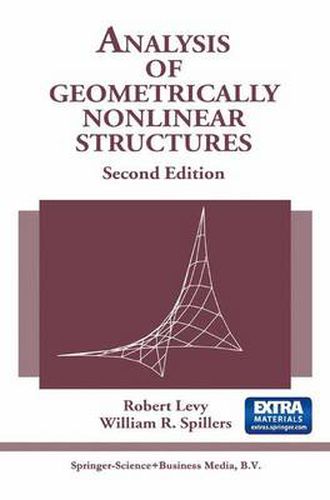Readings Newsletter
Become a Readings Member to make your shopping experience even easier.
Sign in or sign up for free!
You’re not far away from qualifying for FREE standard shipping within Australia
You’ve qualified for FREE standard shipping within Australia
The cart is loading…






This title is printed to order. This book may have been self-published. If so, we cannot guarantee the quality of the content. In the main most books will have gone through the editing process however some may not. We therefore suggest that you be aware of this before ordering this book. If in doubt check either the author or publisher’s details as we are unable to accept any returns unless they are faulty. Please contact us if you have any questions.
The availability of computers has, in real terms, moved forward the practice of structural engineering. Where it was once enough to have any analysis given a complex configuration, the profession today is much more demanding. How engineers should be more demanding is the subject of this book. In terms of the theory of structures, the importance of geometric nonlinearities is explained by the theorem which states that In the presence of prestress, geometric nonlinearities are of the same order of magnitude as linear elastic effects in structures.
This theorem implies that in most cases (in all cases of incremental analysis) geometric nonlinearities should be considered. And it is well known that problems of buckling, cable nets, fabric structures, … REQUIRE the inclusion of geometric nonlinearities. What is offered in the book which follows is a unified approach (for both discrete and continuous systems) to geometric nonlinearities which incidentally does not require a discussion of large strain. What makes this all work is perturbation theory. Let the equations of equilibrium for a system be written as where P represents the applied loads, F represents the member forces or stresses, and N represents the operator which describes system equilibrium.
$9.00 standard shipping within Australia
FREE standard shipping within Australia for orders over $100.00
Express & International shipping calculated at checkout
This title is printed to order. This book may have been self-published. If so, we cannot guarantee the quality of the content. In the main most books will have gone through the editing process however some may not. We therefore suggest that you be aware of this before ordering this book. If in doubt check either the author or publisher’s details as we are unable to accept any returns unless they are faulty. Please contact us if you have any questions.
The availability of computers has, in real terms, moved forward the practice of structural engineering. Where it was once enough to have any analysis given a complex configuration, the profession today is much more demanding. How engineers should be more demanding is the subject of this book. In terms of the theory of structures, the importance of geometric nonlinearities is explained by the theorem which states that In the presence of prestress, geometric nonlinearities are of the same order of magnitude as linear elastic effects in structures.
This theorem implies that in most cases (in all cases of incremental analysis) geometric nonlinearities should be considered. And it is well known that problems of buckling, cable nets, fabric structures, … REQUIRE the inclusion of geometric nonlinearities. What is offered in the book which follows is a unified approach (for both discrete and continuous systems) to geometric nonlinearities which incidentally does not require a discussion of large strain. What makes this all work is perturbation theory. Let the equations of equilibrium for a system be written as where P represents the applied loads, F represents the member forces or stresses, and N represents the operator which describes system equilibrium.